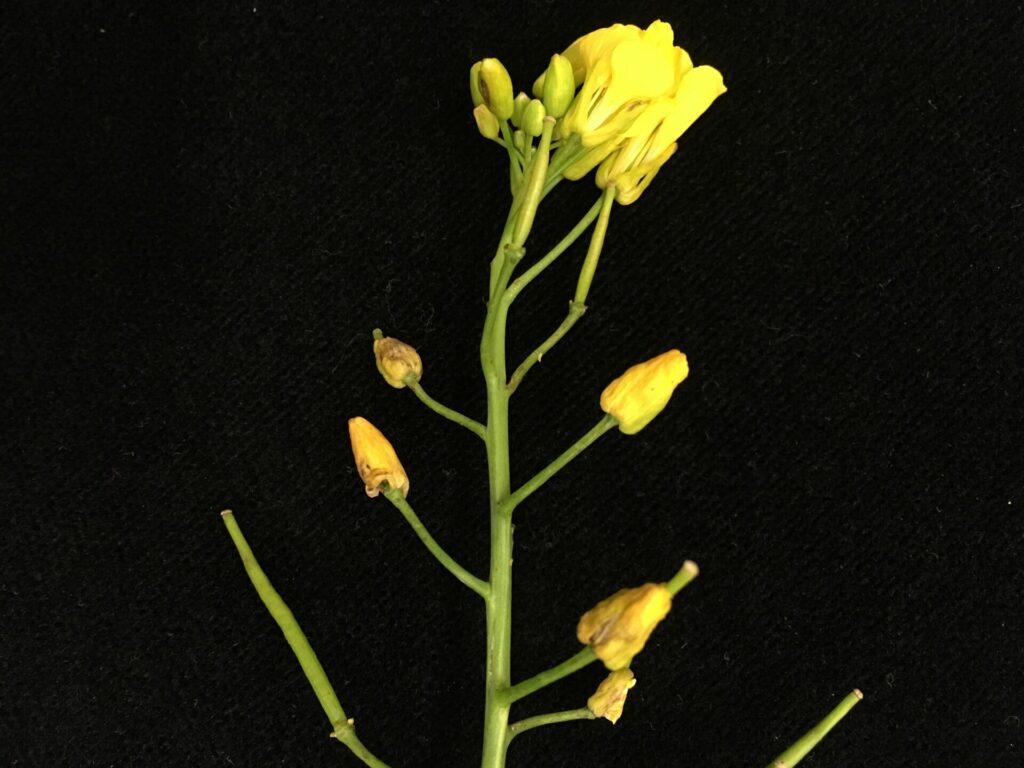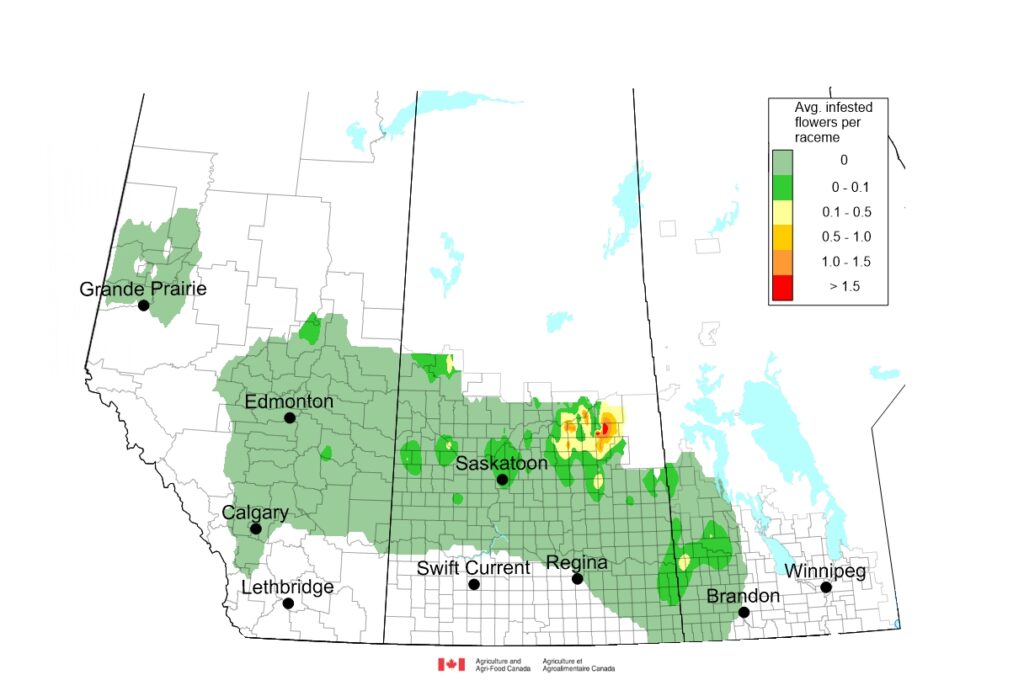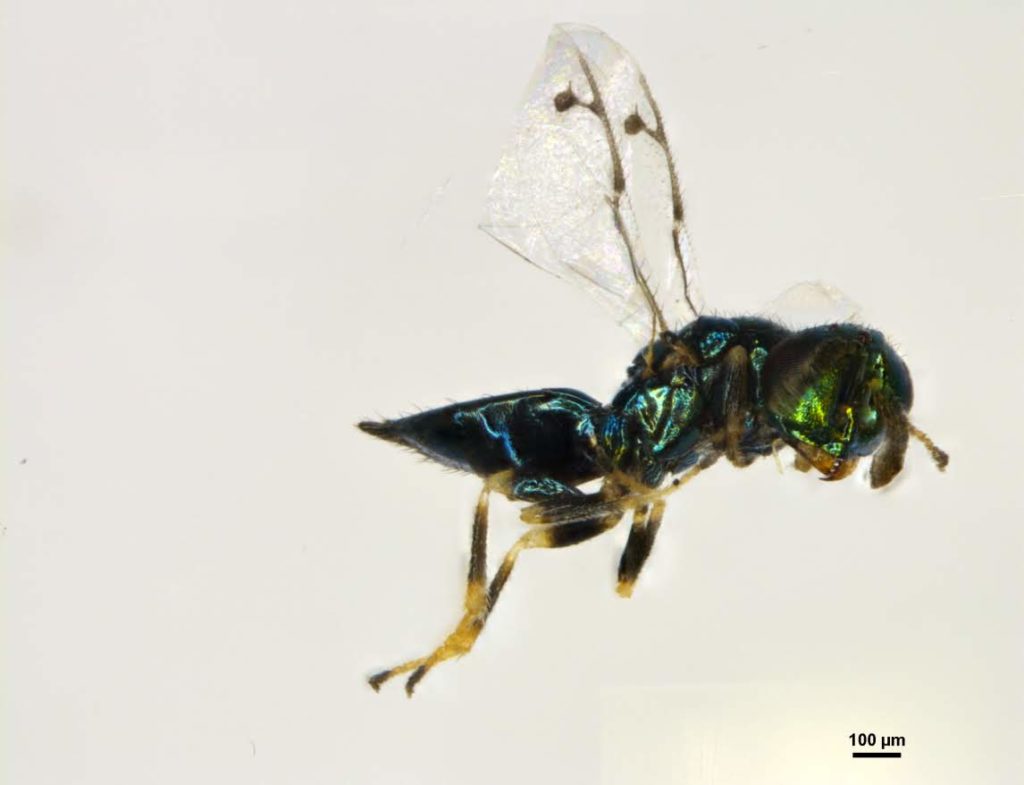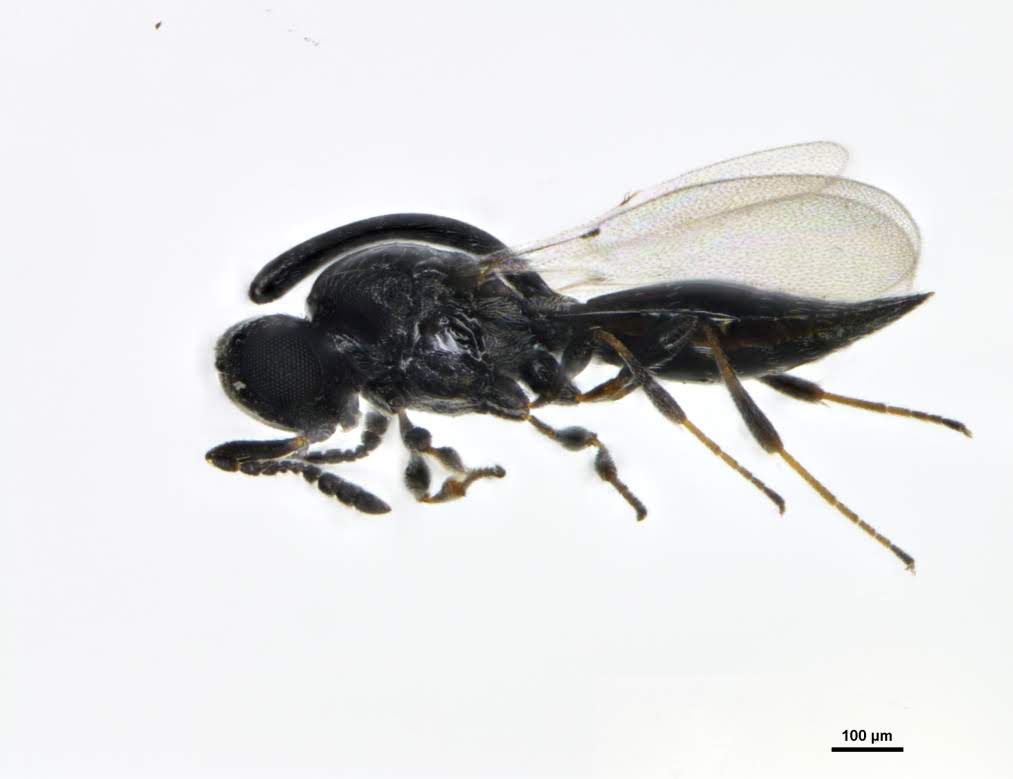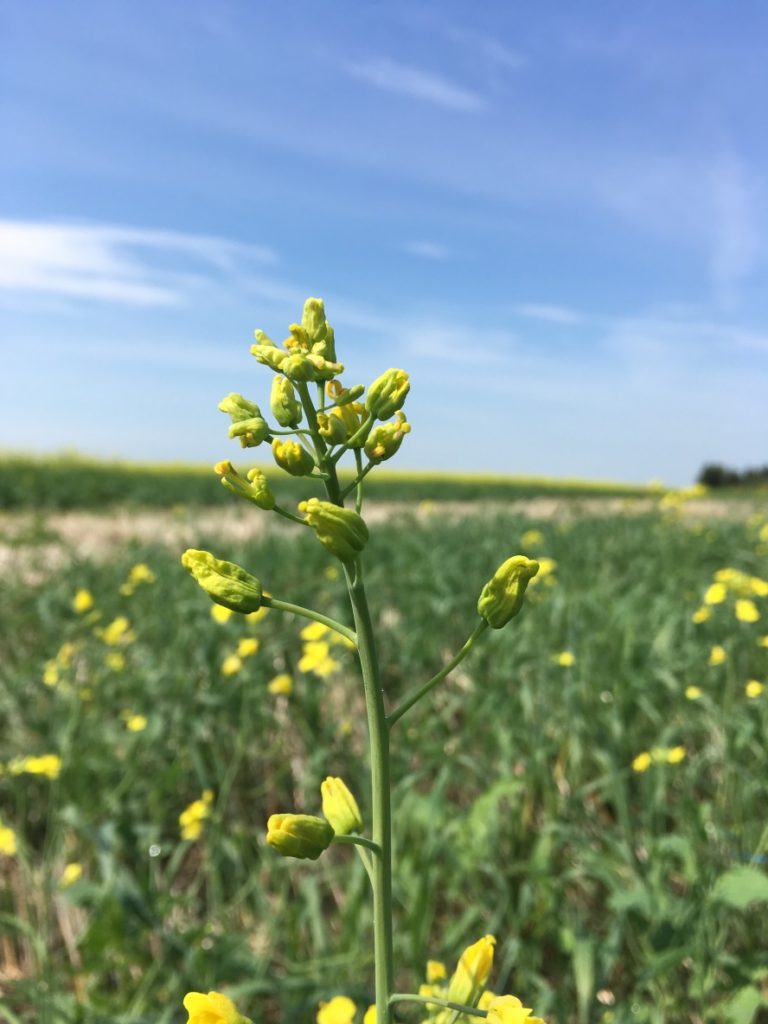Canola flower midge overwinter inside cocoons in the soil and adults usually begin to emerge in late June and can be found until late August, so long as canola flowers are available. There are likely two generations per year, but emergence of adults also seems to be relatively unsynchronized and may not always occur in distinct peaks that align with discrete generations. Canola flower midge adults are not damaging to their host plants. The presence of adult canola flower midge can be detected using pheromone-baited traps.
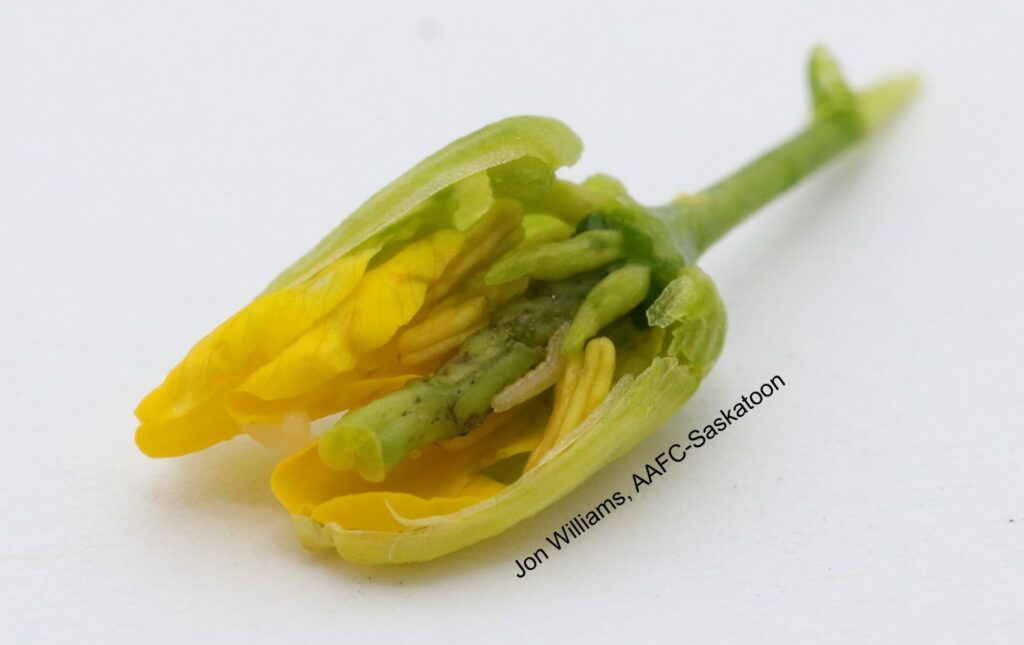
Adult female canola flower midge lay their eggs on developing canola buds before they bloom. The larvae develop in groups inside the flower, resulting in a galled flower that does not produce a pod.
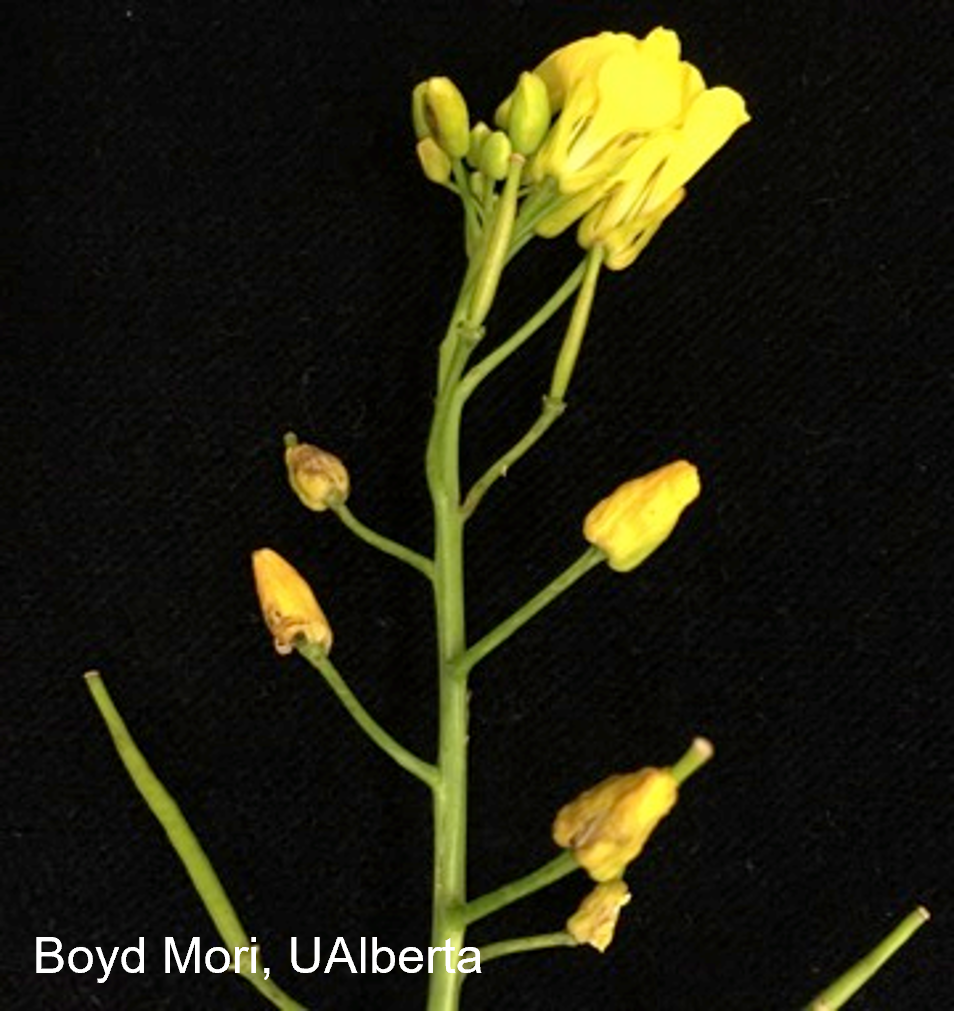
Galled flowers can occur at any point along a canola raceme, with early emerging adults laying eggs on the first flowers to open. The galled flowers tend to remain ‘stuck’ on the raceme, even after the larvae have dropped to the soil to pupate. A monitoring protocol for canola flower midge, based on galled flowers can be used to estimate population densities in canola fields.
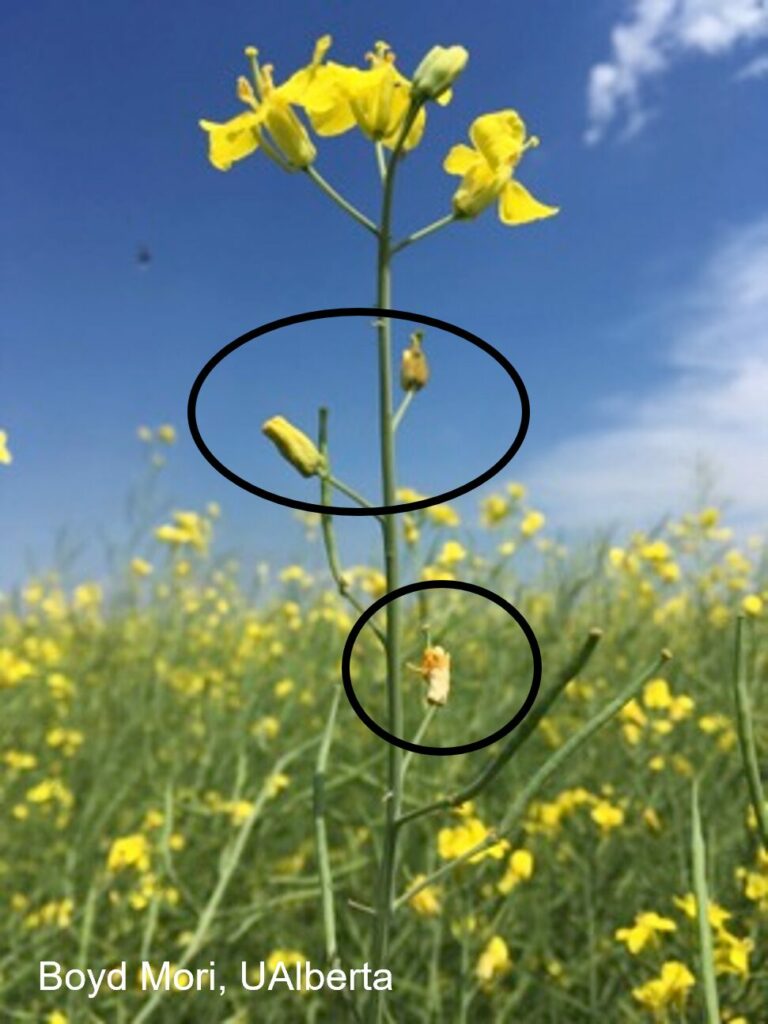
Canola flower midge was described in the scientific literature in a paper published by Mori et al. in 2019, after its identify was confirmed in 2016. There is still a lot to learn about canola flower midge, including its potential to have economic impacts on canola yield.
Please read more about canola flower midge in previous Insect of the Week posts published in 2018 and 2021 or visit the Canola Council of Canada Canola Encyclopedia for more information about canola flower midge.

